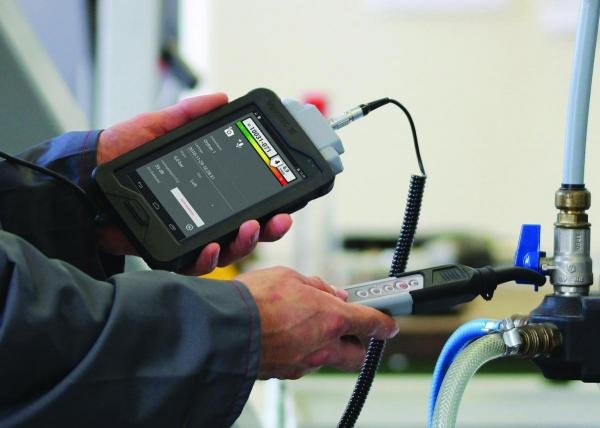
Acoustical Imaging: The Emergence of a New Technology for Compressed Air Leak Detection
Any business owner knows the importance of maintaining a comfortable and energy-efficient workplace. Unfortunately, air leaks can be a big problem for many businesses and workplaces, resulting in wasted energy and higher utility bills.
You might think that a 3mm leak won’t matter much, but the impact of air leaks can see the UK lose an estimated £100 million every year! That’s why compressed air leak detection is evolving and becoming easier to sort out, such as with the development of acoustical imaging.
What is acoustical imaging?
Acoustical imaging is the process of using sound waves to create an image. This technology has been used for years in medical applications, such as ultrasounds and has more recently been adapted for use in compressed air leak detection.
An acoustical imager uses high-frequency sound waves to identify leaks in pressurized systems. The sound waves are emitted from the device and bounce off the surfaces of the pipes. The leaks create a unique signature that can be detected by the acoustical imager and used to pinpoint the location of the leak.
3 Ways How Acoustic Imaging is helping in Compressed Air Leak Detection
The technology of acoustical imaging is becoming more widespread due to its many benefits. Let’s take a look at some of the ways that it is helping businesses with compressed air leak detection:
- Identification of leakage at Heights
Acoustic imaging is often used in order to identify sources of leakage, particularly at heights. This is because acoustic imaging can be used to create a two-dimensional representation of a three-dimensional area, penetrates through materials that block visibility, and is effective at long range.
It can be used to identify all sorts of leaks, including those in plumbing, roofs, and walls. It is also often used in combination with other methods of leak detection, such as infrared imaging and moisture mapping, in order to get a complete picture of where a leak is coming from.
The practical implication of acoustic imaging in wood products proves the potential of the technology in the industry. Furthermore, this technology is useful for the detection of hard to reach areas and the surface area of the leaks that need to be repaired.

- Assist in Scanning Large Areas
It can be used to scan large areas quickly. This is because the sound waves can penetrate through materials and bounce off the surfaces of the pipes. This means that the acoustical imager can quickly identify the location of the leak.
It is particularly useful for businesses that have large premises and a lot of pipes. It can be very time-consuming to manually check all of the pipes for leaks, so using an acoustical imager can save a lot of time and effort.
- Safe and easy to use
Acoustic imaging is also a very safe way to detect leaks. This is because the technology uses sound waves to identify the location of the leak. There is no need to use any harmful chemicals or gasses. Unlike some other methods of leak detection, acoustic imaging is not harmful to the environment or the people who are using it.
The person who is using the acoustical imager just needs to point the device at the area where they think there may be a leak and the device will do the rest. The person operating the acoustic imager does not need any special training or skills. Therefore, businesses are finding that acoustic imaging is a very effective way to detect leaks.
Conclusion
Technology has come a long way in the last few years and businesses are finding that there are many benefits to using acoustic imaging to detect leaks. Acoustic imaging is a very fast, effective and safe way to detect leaks.
The advantages of acoustic imaging over traditional methods, such as visual inspection or infrared detection, are that it is more sensitive and can detect smaller leaks. In addition, acoustic imaging can be used in difficult-to-reach or confined spaces, making it an ideal choice for many industrial applications.
This could lead to significant cost savings for companies that rely on compressed air systems. If you are in charge of maintaining a compressed air system, or if you are thinking about implementing one, you should keep acoustical imaging in mind as a potential solution to your leak detection needs.




